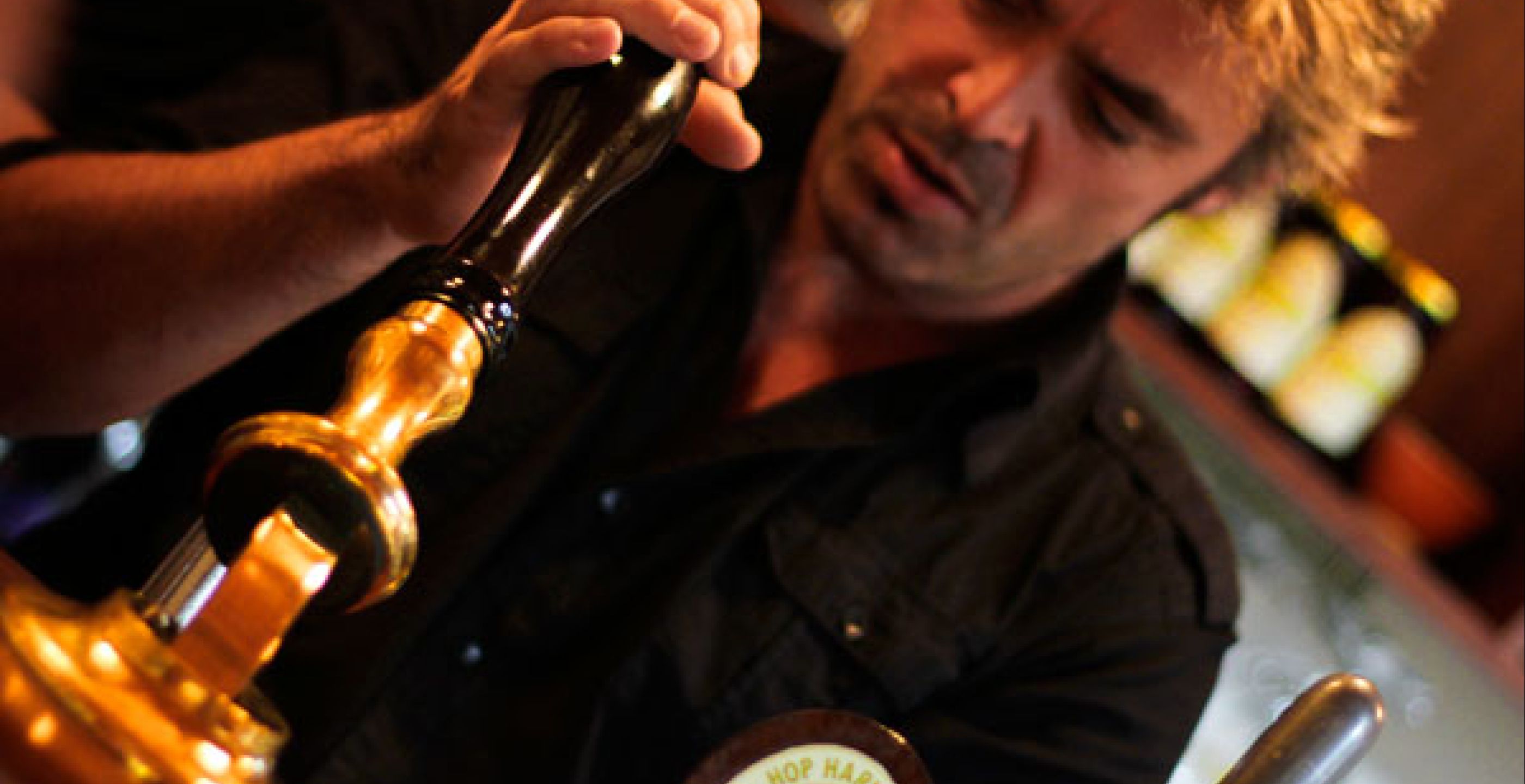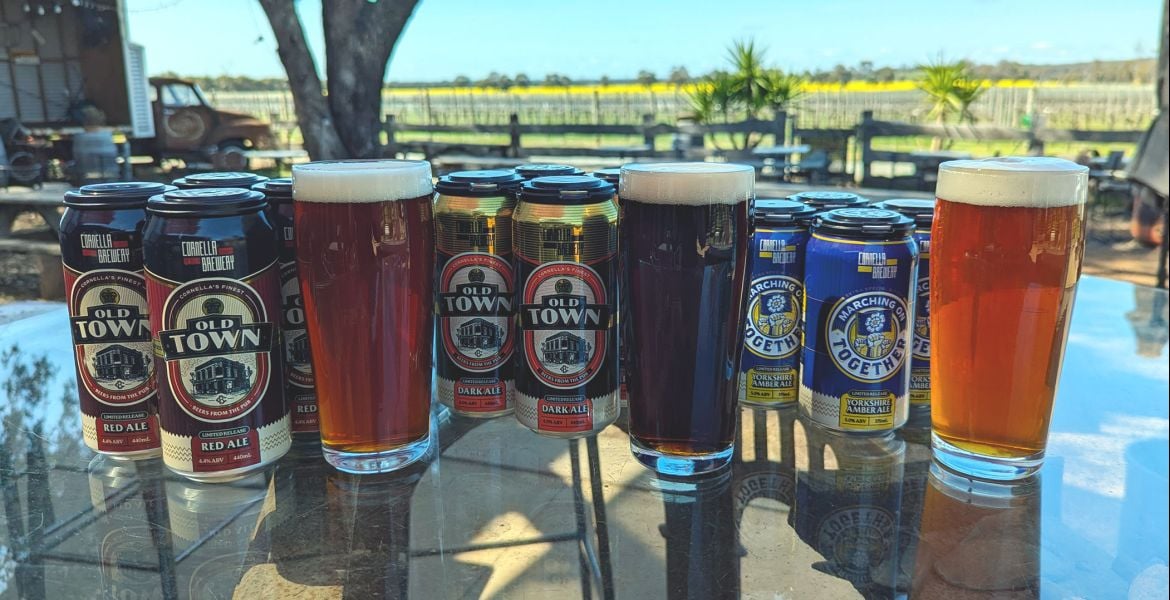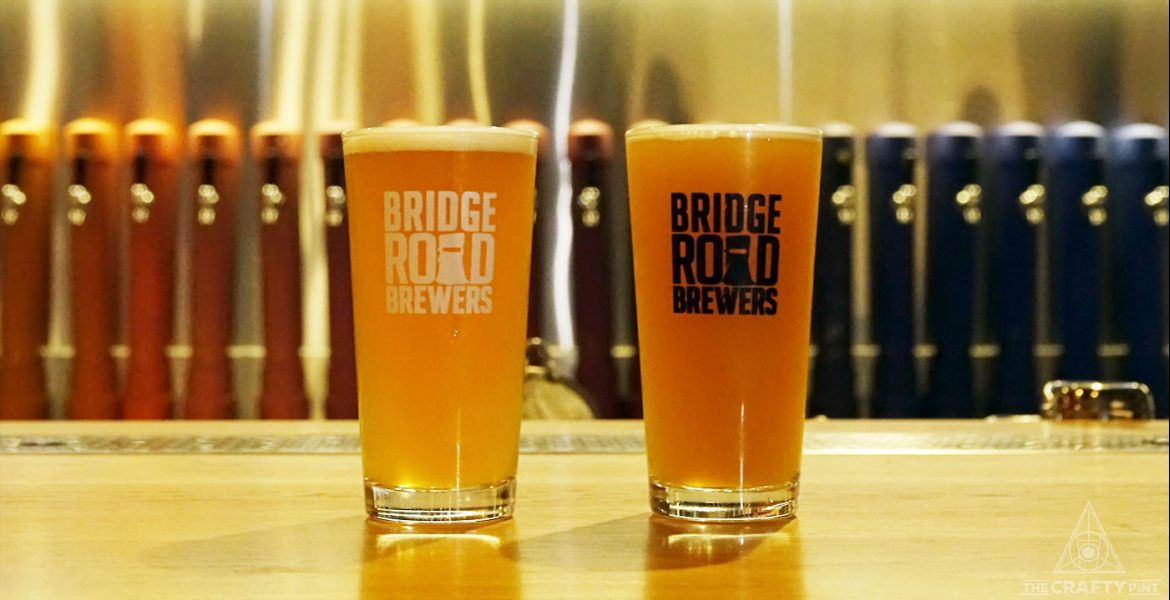Up until now, if you wanted to taste genuine real ale on tap in Australia – real ale as defined by the UK"s Campaign for Real Ale (CAMRA) – you had one choice: head to the Wig & Pen in Canberra. That or the one pump that used to pour 3 Ravens beer at the sadly departed Lambs Go Bar. But, as a shipment of casks draws ever closer to these shores, that’s set to change, with The Local Taphouse working on plans to encourage local brewers to brew some of their ales for casks rather than kegs.
“Whatchoo talking ‘bout, Crafty?”
OK. Forgive us while we get a little bit technical for a moment…
For a definition of what real ale really is, it’s best to refer to the guardians of British tradition, CAMRA (the Campaign for Real Ale). These guys have done sterling work since forming in the 1970s to keep British brewing traditions alive and real ale in pubs and state that for an ale to be considered a real ale it has to be brewed using “traditional ingredients” and “matured by secondary fermentation in the container from which it is dispensed, and served without the use of extraneous carbon dioxide”. Before a beer is transferred to a keg, it is filtered, pasteurised or both so fermentation stops and no further conditioning takes place, which means it’s not classified as real real ale. However, if it’s put into a cask – formerly wooden barrels, these days usually stainless steel barrels – that allow conditioning to continue, then it is.
“So bloody what?” you ask.
Well, it does make a difference. For one, the natural carbonation from cask conditioning is generally much softer and smoother than that gained from forced carbonation. And by maturing in the cask, a real ale can take on different characters over time, whereas a keg beer is likely to be at its very best the second it leaves the brewery.

Casks outside Nottingham’s Castle Rock brewery – Crafty’s drunk from these!
“But what about the beers I’ve had from handpumps in some pubs and breweries in Australia?”
Well, if it wasn’t at the Wig & Pen, chances are it wasn’t a really real ale. Instead it’s likely to be a brewery’s beer adjusted slightly (lower carbonation, for example) to suit being poured from the pump. You’ll get a different experience, but CAMRA would shake their balding, beardy heads and say it’s not quite the real thing.
Anyway, before this becomes a thesis (“What do you mean ‘before’, Crafty?”), the point is you’ll soon have the chance to taste the difference for yourself. Twenty brand new casks are en route to The Local Taphouses and a further ten to the Wig & Pen. The former are building cask rooms at their venues in St Kilda and Darlinghurst and installing handpumps; the latter is topping up its cask supplies to meet demand.
“I’ve approached some Australian brewers, like Red Hill, Mountain Goat, Stone & Wood and Murray’s, to see if they’re interested in taking empty casks from us and filling them with beers suitable for undergoing a secondary fermentation,” says Taphouse founder Steve Jeffares. “We’ll be storing and serving them at 10-12C and hopefully will have enough casks to have the pumps running full time.”
He says Wig & Pen brewer Richard Watkins will be acting as consultant, on hand to advise brewers and helping set up the cask rooms at the Taphouses.

Wig & Pen’s taps (from www.wigandpen.com.au)
“We find that the real ales are going well,” says Richard. “We’ve got four real ale taps out of 16, pouring a Pale Mild, Pale Ale, IPA and a seasonal, and they account for 30% of our sales. There’s enough people out there who are aware of what real ale is and enjoy drinking it as an alternative over the cold, fizzy stuff.
“If brewers are committed to it and do it properly then it should convince people to drink it.”
All being well, we should start seeing the first fruits of the venture around the middle of the year.
The Strange Case Of The Tasmanian Real Ale
Well, perhaps not strange, but certainly a little different. At Two Metre Tall, in the Derwent Valley, they’re as committed to traditional methods of ale and cider making as any in Australia, growing all their ingredients on the farm.
“We have always been, and still are, absolutely, unwaveringly, 100% committed to real ale,” says Ashley Huntington. “And, as such, are exclusively bottle and cask conditioned in everything we do, including all of our ciders.

Hop harvest time at Two Metre Tall
“I haven’t used English real ale casks yet because, as a wholesaler, if I rolled one of those into a pub – even a supposedly ‘craft ale pub’ – I’d have to roll it straight back out again. I use a modified version of a standard spear keg, removing the spear to fill and “spile”, connected to my handpumps. We will only serve our ales on handpump, a commitment the vast majority of establishments are still unwilling to undertake, even though we will supply the beer engine!
“It’s still a tough gig trying to get real handpumped ale on premise, but we’re in for the long haul and, slowly, the market is moving in the right direction; certainly as fast as we can keep up, anyway!”
He’s in the process of acquiring both wine and real ale casks to use at the various festivals they attend, for barrel-aging and at their onsite Farm Bar. Visitors to Hobart can sample their ale through a handpump at the Preachers Bar near Salamanca Place.



















